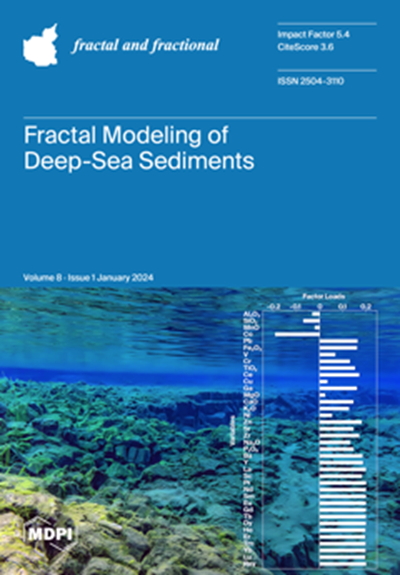Oxidopamine-Induced Nuclear Alterations Quantified Using Advanced Fractal Analysis: Random Forest Machine Learning Approach
IF 3.3
2区 数学
Q1 MATHEMATICS, INTERDISCIPLINARY APPLICATIONS
引用次数: 0
Abstract
Fractal analysis (FA) is a contemporary computational technique that can assist in identifying and assessing nuanced structural alterations in cells and tissues after exposure to certain toxic chemical agents. Its application in toxicology may be particularly valuable for quantifying structural changes in cell nuclei during conventional microscopy assessments. In recent years, the fractal dimension and lacunarity of cell nuclei, considered among the most significant FA features, have been suggested as potentially important indicators of cell damage and death. In this study, we demonstrate the feasibility of developing a random forest machine learning model that employs fractal indicators as input data to identify yeast cells treated with oxidopamine (6-hydroxydopamine, 6-OHDA), a powerful toxin commonly applied in neuroscience research. The model achieves notable classification accuracy and discriminatory power, with an area under the receiver operating characteristics curve of more than 0.8. Moreover, it surpasses alternative decision tree models, such as the gradient-boosting classifier, in differentiating treated cells from their intact counterparts. Despite the methodological challenges associated with fractal analysis and random forest training, this approach offers a promising avenue for the continued exploration of machine learning applications in cellular physiology, pathology, and toxicology.使用高级分形分析量化氧化多巴胺诱导的核改变:随机森林机器学习方法
分形分析(FA)是一种现代计算技术,可以帮助识别和评估暴露于某些有毒化学物质后细胞和组织的细微结构变化。它在毒理学中的应用可能对在常规显微镜评估中定量细胞核结构变化特别有价值。近年来,细胞核的分形维数和间隙性被认为是最重要的FA特征之一,被认为是细胞损伤和死亡的潜在重要指标。在这项研究中,我们证明了开发随机森林机器学习模型的可行性,该模型采用分形指标作为输入数据来识别氧化多巴胺(6-羟多巴胺,6-OHDA)处理的酵母细胞,氧化多巴胺是一种通常用于神经科学研究的强效毒素。该模型具有显著的分类精度和判别能力,受者工作特征曲线下面积大于0.8。此外,它超越了其他决策树模型,如梯度增强分类器,在区分处理过的细胞和完整的细胞方面。尽管分形分析和随机森林训练在方法上存在挑战,但这种方法为继续探索机器学习在细胞生理学、病理学和毒理学中的应用提供了一条有前途的途径。
本文章由计算机程序翻译,如有差异,请以英文原文为准。
求助全文
约1分钟内获得全文
求助全文
来源期刊

Fractal and Fractional
MATHEMATICS, INTERDISCIPLINARY APPLICATIONS-
CiteScore
4.60
自引率
18.50%
发文量
632
审稿时长
11 weeks
期刊介绍:
Fractal and Fractional is an international, scientific, peer-reviewed, open access journal that focuses on the study of fractals and fractional calculus, as well as their applications across various fields of science and engineering. It is published monthly online by MDPI and offers a cutting-edge platform for research papers, reviews, and short notes in this specialized area. The journal, identified by ISSN 2504-3110, encourages scientists to submit their experimental and theoretical findings in great detail, with no limits on the length of manuscripts to ensure reproducibility. A key objective is to facilitate the publication of detailed research, including experimental procedures and calculations. "Fractal and Fractional" also stands out for its unique offerings: it warmly welcomes manuscripts related to research proposals and innovative ideas, and allows for the deposition of electronic files containing detailed calculations and experimental protocols as supplementary material.
 求助内容:
求助内容: 应助结果提醒方式:
应助结果提醒方式:


